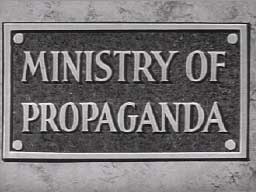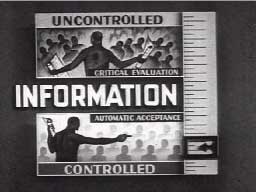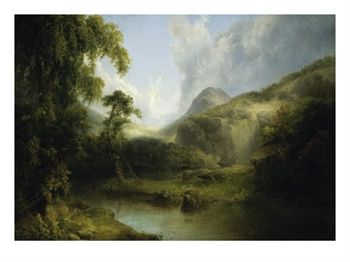Living in a small city with little, if nothing, happening has some untold benefits. Especially when you have access to an eclectic film library at your workplace. So, in an attempt to start chronicling one of my passions, I offer up the following list of films I have seen over the past week:
 Planet of the Vampires, or Terrore nello spazio (1965), has been part of my return to Mario Bava as of late. This film is remarkable to me because it proves that vision and imagination is far more important than finances. Bava turns simple models into a psychedelic trip through outer space. The plot has two spaceships filled with the best-dressed astronauts ever (it is an Italian film, mind you) that land on a deserted planet to investigate the SOS transmission they have been monitoring. Turns out the planet is inhabited by formless beings that need to be hosted by foreign bodies in order to escape the limited resources that plague their planet (sounds remarkably similar to the plot of Ridley Scott’s Alien , no?). Moreover, the mist-filled planet seems to inform the aesthetic of Alien, creating a specular experience – perhaps born from limited resources – that realizes an abstract vision of space that opens up an imaginative element of cross-fertilizing scifi and horror (another benchmark used to celebrate Alien). I have more to say about this film, but for now let it suffice that the first 10 minutes alone are truly an experience to behold.
Planet of the Vampires, or Terrore nello spazio (1965), has been part of my return to Mario Bava as of late. This film is remarkable to me because it proves that vision and imagination is far more important than finances. Bava turns simple models into a psychedelic trip through outer space. The plot has two spaceships filled with the best-dressed astronauts ever (it is an Italian film, mind you) that land on a deserted planet to investigate the SOS transmission they have been monitoring. Turns out the planet is inhabited by formless beings that need to be hosted by foreign bodies in order to escape the limited resources that plague their planet (sounds remarkably similar to the plot of Ridley Scott’s Alien , no?). Moreover, the mist-filled planet seems to inform the aesthetic of Alien, creating a specular experience – perhaps born from limited resources – that realizes an abstract vision of space that opens up an imaginative element of cross-fertilizing scifi and horror (another benchmark used to celebrate Alien). I have more to say about this film, but for now let it suffice that the first 10 minutes alone are truly an experience to behold.
 The Set-Up (1949): Now this is a masterpiece! I watched the film and then the commentary by the director, Robert Wise, and Martin Scorsese. As Scorsese says,” the film is tough and lean like the boxers it portrays.” The film is 72 minutes long and takes place in real time (pre-dating the oft quoted example of High Noon) and the pacing is a remarkable feat of editing. Moreover, Robert Ryan, who I first experienced later on in his career in the The Wild Bunch, delivers a “knockout” performance (perhaps his own experience as a boxer is a plus in this regard). Nonetheless, the film is as efficient and effective a movie as I have ever seen, and it needs to be experienced … one remark – the plot leads up to the climactic fight within a run-down locker room which gives the audience a privileged perspective, allowing an in-depth look at the fighters as they mentally prepare themselves to box. Additionally, the violence that overcomes the crowd during the boxing scenes is directly quoted by Scorsese in Raging Bull – it is the art of film at its best!
The Set-Up (1949): Now this is a masterpiece! I watched the film and then the commentary by the director, Robert Wise, and Martin Scorsese. As Scorsese says,” the film is tough and lean like the boxers it portrays.” The film is 72 minutes long and takes place in real time (pre-dating the oft quoted example of High Noon) and the pacing is a remarkable feat of editing. Moreover, Robert Ryan, who I first experienced later on in his career in the The Wild Bunch, delivers a “knockout” performance (perhaps his own experience as a boxer is a plus in this regard). Nonetheless, the film is as efficient and effective a movie as I have ever seen, and it needs to be experienced … one remark – the plot leads up to the climactic fight within a run-down locker room which gives the audience a privileged perspective, allowing an in-depth look at the fighters as they mentally prepare themselves to box. Additionally, the violence that overcomes the crowd during the boxing scenes is directly quoted by Scorsese in Raging Bull – it is the art of film at its best!
 Bay of Angels (Le baie des anges, 1963): Ever wanted to know why everyone thinks Jeanne Moreau is so brilliant? Me too, until I watched this film by Jacques Demy. Her performance is by far the highlight of this movie … her dialogue at times moves the immediate plot into a larger rumination of the position and possibility of humanity, and particularly women, within a world of practicality and convention. I wish I could quote her right now, but I can’t, so watch the film – and then report back to bavatuesdays about one of the most bizarre endings in French cinema. How do you interpret the way this film cuts and runs away from the unbelievable complexity it has traced throughout the picture? Does it end? Can it be chalked up to a modernist experiment in film a la Jean-Luc Godard? An arbitrary out? A sentimental release from the pain? What? See it!!!
Bay of Angels (Le baie des anges, 1963): Ever wanted to know why everyone thinks Jeanne Moreau is so brilliant? Me too, until I watched this film by Jacques Demy. Her performance is by far the highlight of this movie … her dialogue at times moves the immediate plot into a larger rumination of the position and possibility of humanity, and particularly women, within a world of practicality and convention. I wish I could quote her right now, but I can’t, so watch the film – and then report back to bavatuesdays about one of the most bizarre endings in French cinema. How do you interpret the way this film cuts and runs away from the unbelievable complexity it has traced throughout the picture? Does it end? Can it be chalked up to a modernist experiment in film a la Jean-Luc Godard? An arbitrary out? A sentimental release from the pain? What? See it!!!
 Gun Crazy (1948) originally titled Deadly is the Female, is an interesting film to write about after just having discussed Bay of Angels. The overt distrust and vilification of women in the 40s Noir is reassembled in many ways by Demy and re-focused on the mundane life of the average work-a-day citizen. Moreau’s character offers an escape from this logic.
Gun Crazy (1948) originally titled Deadly is the Female, is an interesting film to write about after just having discussed Bay of Angels. The overt distrust and vilification of women in the 40s Noir is reassembled in many ways by Demy and re-focused on the mundane life of the average work-a-day citizen. Moreau’s character offers an escape from this logic.
In the Noir, and particularly Gun Crazy, the moral universe revolves around a return to normalcy and a re-enforcing of the man’s position of power. Yet, as with most overt attempts at restoring order, intentionality is never fully controllable making the power of women in the noir an irresistible force. For example, French films during the 50s and 60s continually quote, reference and re-frame the American films of the 40s for their raw examination of the underbelly of post-war America. Gun Crazy is just such a movie, for its relentless attempt to frame the leading man’s (played by John Dall) demise through his relationship with the “wrong woman” is continually undermined by the fact the Annie’s (played remarkably by Peggy Cummins) “immoral” desires are wrapped up as deeply with the historical factors shaping the moment as the film’s attempt to erase them! Additionally, the final scene in the swamp brings back memories of Planet of the Vampires– its amazing how concealing the image in film is so often much more visceral than revealing it. James Naremore has a 1001 interesting things to say about this film in his solid study of noir More than Night, not the least of which is that Gun Crazy was written by Dalton Trumbo under a pseudonym (perhaps the most famous of the Hollywood 10). You must see it!!!
Well, that’s all I have time for now, but that should give you some good things to ‘look at’ for a while …
P.S. – As you may or may not have noticed, three of the four films have not been discussed in Wikipedia just yet, so it looks like “me/we” have even more work to do- anyone want to join me in some dynamic encyclopedia writing?

 Matthew Levine’s article “In Search of the Holy Grail” on
Matthew Levine’s article “In Search of the Holy Grail” on  Now, I have seen the little icon that looks like roadkill, but I never really associated it with the program irfanview. But I am sure that’s just me because according to
Now, I have seen the little icon that looks like roadkill, but I never really associated it with the program irfanview. But I am sure that’s just me because according to  I was already deeply disappointed when I first heard that
I was already deeply disappointed when I first heard that 


 If you haven’t seen
If you haven’t seen  This begins to suggests tremendous possibilities for film classes that want to encourage students to engage in the construction of a filmic narrative within a rich, historical context of the medium. In fact, the movies available are often psuedo-documentary, educational/industrial shorts that would beautifully complement/supplement a film genres history class, to use one example. Just imagine it: students watch, consider, and then learn how to create films from the raw material of the archive that somehow reflect their understanding of the various genres through access to primary documents that help contextualize specific time periods. Wow, now that would be a class I would have died to take as an undergraduate!
This begins to suggests tremendous possibilities for film classes that want to encourage students to engage in the construction of a filmic narrative within a rich, historical context of the medium. In fact, the movies available are often psuedo-documentary, educational/industrial shorts that would beautifully complement/supplement a film genres history class, to use one example. Just imagine it: students watch, consider, and then learn how to create films from the raw material of the archive that somehow reflect their understanding of the various genres through access to primary documents that help contextualize specific time periods. Wow, now that would be a class I would have died to take as an undergraduate! While discussing the limits and possibilites of the current external web hosting experiment at
While discussing the limits and possibilites of the current external web hosting experiment at  I have no idea why Chuck Norris has become a cult hero – but I recently read an article in the
I have no idea why Chuck Norris has become a cult hero – but I recently read an article in the  After finishing the article, I pushed this apotheosis of “Walker” out of my psyche and tried to cleanse myself of chic ironic positioning I don’t understand. But all to no avail, for my friend Zach just sent me the following link to the
After finishing the article, I pushed this apotheosis of “Walker” out of my psyche and tried to cleanse myself of chic ironic positioning I don’t understand. But all to no avail, for my friend Zach just sent me the following link to the 